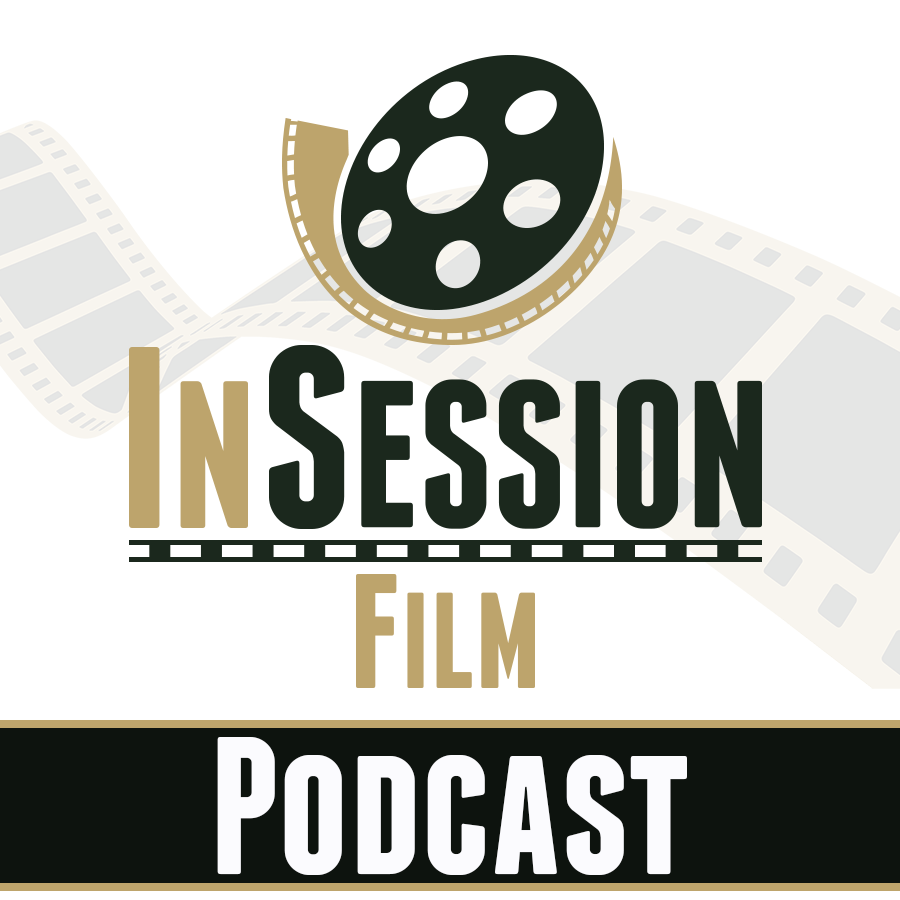Director: Danny Boyle
Writers: Alex Garland
Stars: Aaron Taylor-Johnson, Jodie Comer, Ralph Fiennes
Synopsis: A group of survivors of the rage virus live on a small island. When one of the group leaves the island on a mission into the mainland, he discovers secrets, wonders, and horrors that have mutated not only the infected but other survivors.
In 2002, Danny Boyle and Anthony Dod Mantle pioneered digital filmmaking by shooting 28 Days Later on a Canon XL1 DV camera, giving the Zombie apocalypse film a unique look and feel, while also paving the way for the acceptance of digital cinematography as the film industry began the transition from celluloid to memory cards. In the post-digital era we live in today, it is now routine for studios (and directors) to use newer cameras for their projects, as it is much cheaper and less cumbersome than film. And while there were formal innovations at the time where digital was not widely accepted, such as in Michael Mann’s Collateral and Miami Vice, the sludgy pictures filling our screens today is the most significant symptom of a desire to make each “big screen” experience as televisual as possible.
Digital filmmaking requires different considerations than film, yet few directors are actively interested in exploring these newer technologies and offering never-before-seen images for the audience to question their place in society. However, in the year of our lord 2025, auteurs like Jia Zhangke, Steven Soderbergh, David Cronenberg, Takeshi Kitano, Leos Carax, and Joseph Kosinski have all begun to question how filmmaking in this era should be approached when the big-budget productions of this Earth have grown more and more sterile. It makes their movies stand out amongst the rest of the pack, as they figure out the purpose of cinema at a time when few moviegoers actively want to see a film on the big screen.
For the much-anticipated 28 Years Later, Danny Boyle fundamentally understands that, for an audience to see his latest project in the cinema, he must offer them images they have never witnessed before, even if filmmakers like Sean Baker and Soderbergh experimented on the predominant device Boyle (and Dod Mantle) shot their Zombie film on: iPhones. Transcending the artifice Soderbergh established in Unsane and High Flying Bird, Boyle immediately jolts our attention with his perversely funny opening scene, as a group of children are mortified in terror as they are forced to watch the Teletubbies, whilst the rage virus outbreak is creeping at their doors.
In a recent interview, Boyle had discussed how he wanted to “desecrate the innocence” of the popular BBC children’s television series, but how Dod Mantle shoots the dingy television gives us our first honest look at how genuinely terrifying Tinky-Winky, Dipsy, Laa-Laa, and Po (alongside the Baby Sun, likely the most accurate visualization of Hell ever created) have always been. As editor Jon Harris cuts to the reaction shots of the petrified children who are attempting to ignore the horrors around them by watching the most horrifying television show made for kids, the outbreak begins to multiply rapidly, until it affects everyone in the room. It’s an intense cold open that primes the audience for the multiple tonal shifts Boyle’s latest film will play with, often darkly funnier than you expect, while also being unafraid to explore nastier, upsetting territories.
The opening 35 minutes or so of the movie (it could perhaps be even longer, I don’t carry a watch, but there’s a clear shift between the first and second half that most will notice) is the franchise at its most cogent and aesthetically exciting. Screenwriter Alex Garland, with best screenplay since…2015 (Jesus), is not only angry at how pessimistic society has become, but also violently rejects what most fans have been looking forward to seeing in a movie like this. Instead of giving answers to how the world looks 28 years after the initial outbreak, he immediately subverts expectations by paralleling the present-day story of Jamie (Aaron Taylor-Johnson), Isla (Jodie Comer), and their son Spike (Alfie Williams) to the darkest periods of world history and cinema.
:max_bytes(150000):strip_icc()/28YEARSLATER-041625-01-ba0b2e6fde6c41249e93abf28ee905d4.jpg)
Through a riveting collage of archival footage as Jamie and Spike step out of the comforts of their remote island to hunt for the infected, Garland associates their actions to a bevy of medieval-set movies, as society has had to regress from the innovations of their times to the most primal human needs, with no access to cutting-edge medical treatment, weapons, and technologies. Spike has grown up in a closed-off community, away from the infected, and doesn’t know what a phone or the internet is. But they must do what they should to survive. However, when Isla begins to experience strange symptoms of an illness, and Jamie speaks of a doctor (Ralph Fiennes) who has gone mad, and lives away from the island, Spike takes her mother to him, hoping he will have an answer to her predicament.
It’s at that point where the movie begins to slow down and remind us that what we’re watching is indeed a Part One™, replete with some of the worst tendencies these films usually have: endless bouts of exposition and lore-dumping that feels, through Garland’s dialogue, like dense plotting, unresolved character arcs, and a denouement that acts more as a tease for what’s to come than a satisfying conclusion that will bridge the gap between the first and second installment.
The climax, in particular, is not at all one. It is more or less an extended teaser for what audiences will be getting in the Nia DaCosta-directed sequel, 28 Years Later: The Bone Temple, than wrapping up this part of the story in a way that will naturally encourage the audience to see what’s next instead of basically forcing the characters to go, “Did you like this? We’re not done yet, you better show up in January for Part 2!” Stuff like this halts the momentum of an all-timer opening section, one that’s filled with as much important commentary on the state of the world we live in today, in a post-COVID society, as it is with revolutionary filmmaking techniques, capturing Zombie action we’ve never seen before done at this scale, and with such a device.
Formally, 28 Years Later is as much of a leap forward in digital cinematography as the first, though with different (and more exciting) considerations. The 2.76:1 aspect ratio adds immense texture to Dod Mantle’s staggering iPhone-shot frames of an orange sky bathing on the human characters, or nature being captured in ways I’ve simply never seen before. The lush greens of the grass, moss and leaves, the bright yellows of daffodils, the bluer-than-blue water that separates the island from the mainland.

Every single image is jaw-dropping: the slight robotic freeze-frames as an infected, whether slow (Garland is finally tipping the hat to George A. Romero) or fast, is violently killed, the claustrophobic close-ups of Isla and Spike as they attempt to shield themselves from a massive gas leak, the slow-motion employed to demonstrate the Alpha Zombie’s strength (complete with an alpha dong, making Bruce LaBruce proud), as it runs in extreme conditions with the intent to dismember as many humans as it can. There’s so much one can extract by just looking at how Dod Mantle captures its characters, especially during its more melancholic conclusion, as Spike and Isla are directly haunted by the specter of Death, when they meet Fiennes’ Doctor Kelson, who tells them of a harsh truth Spike isn’t prepared to hear.
That’s why I didn’t much care about the endless Part One-isms, because Dod Mantle’s cinematography is so revelatory we can dissociate the film’s plotting from its staggering visuals. In an era that has mostly forgotten how to shoot movies and formally innovate, Dod Mantle continues the legacy he began with Thomas Vinterberg in The Celebration and Harmony Korine in Julien Donkey-Boy to continue questioning how a film can be shot at a time where one simple phone (or 50 phones mounted on a rig) can create the most impeccable visual poetry you’ve seen. In a way, it acts as a companion piece to Joseph Kosinski’s incredible F1 The Movie, where cinematographer Claudio Miranda continues his collaboration with the TRON: Legacy filmmaker in their rethinking of large-format photography as they take the exact same set up they experimented with for Top Gun: Maverick, and mount it on racing vehicles.
Kosinski is more of an architectural perfectionist than Boyle, who loves to showcase the imperfections of filmmaking (as demonstrated in 28 Days Later) and its artifice, which he frequently does in 28 Years Later, especially during its DIY-coded final scene, where everything is thrown at the screen in pure maximalism, a complete swing for the fences that will either make or break your appreciation of the work. The narrative paths of both Isla and Spike will also divide audiences, who were looking for a more thrilling affair, especially as Garland halts momentum and decides to ruminate on what life in a post-apocalyptic society means, as medical progress has ceased to exist. Still, Comer and Alfie Williams give the film’s best performances, while the contribution of Taylor-Johnson gets sidelined as soon as the movie shifts tonalities and becomes a more meditative affair.

While I’m not entirely sold on which direction the upcoming Bone Temple will take, one can’t entirely dismiss Boyle and Dod Mantle’s formal daring based on a few baffling screenwriting decisions from Garland. After all, this is the best screenplay he’s written in a long time, but he still seems a bit wobbly from his past missteps. Perhaps the second one will be much clearer, though I’m afraid it will alienate audiences way more than this one does, especially in how it sets up a central character with a strange connection to those godforsaken, Satan-created Teletubbies, making them this franchise’s recurring motif?? What did the children of the world do to deserve such a horrifying show like this one…






